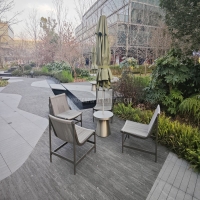Welcome to the website for landscape facilities products and knowledge.
How do landscape tables perform in regions with high humidity or frequent rainfall?
Landscape tables are a popular choice for outdoor spaces, but their performance in regions with high humidity or frequent rainfall is a common concern. The durability of these tables largely depends on the materials used in their construction.
For instance, teak and cedar are excellent choices due to their natural resistance to moisture and rot. These woods contain oils that repel water, making them ideal for humid or rainy climates. Alternatively, metal tables made from aluminum or stainless steel are also highly resistant to rust and corrosion, provided they are powder-coated or treated for extra protection.
Composite materials, such as recycled plastic or resin, are another great option. These synthetic materials mimic the look of wood but are impervious to water, mold, and insect damage. They require minimal maintenance and can withstand prolonged exposure to wet conditions.
To ensure longevity, it’s essential to choose landscape tables with proper drainage features. Tables with slatted designs or built-in gaps allow water to flow through, preventing pooling and reducing the risk of warping or mold growth. Regular cleaning and occasional sealing (for wooden tables) can further enhance their lifespan.
In summary, landscape tables can perform well in high humidity or frequent rainfall regions if made from weather-resistant materials like teak, stainless steel, or composite. Proper design and maintenance are key to keeping them functional and attractive year-round.
Related search:

Recommendation
Metal structure rattan chair without armrests for single person, with woven seat and backrest.